24 Hours Hotline: +86 137-3541-1378
Email:[email protected]
24 Hours Hotline: +86 137-3541-1378
Email:[email protected]
Why Visit the Longmen Grottoes in Luoyang, China
As one of China’s ancient capitals, Luoyang holds immense historical and cultural significance—and the Longmen Grottoes are its crown jewel. Recognized as a UNESCO World Heritage Site, this magnificent complex features tens of thousands of Buddhist statues and carvings that showcase the height of Chinese stone artistry from the Northern Wei to the Tang Dynasty. Beyond their sheer beauty, the grottoes reflect the spiritual devotion, cultural exchange, and artistic mastery of ancient China, making them a must-visit destination for anyone seeking to experience the country’s deep historical and artistic roots. Standing before these monumental cliffs, visitors can feel the harmony between nature and faith, as the tranquil Yi River flows below and centuries of craftsmanship tell the story of a civilization devoted to art and enlightenment.
What to Experience at the Longmen Grottoes in Luoyang
A visit to the Longmen Grottoes is more than just sightseeing—it’s an immersive journey into China’s spiritual and artistic heritage. Stretching along the limestone cliffs of the Yi River, this vast complex reveals the devotion, creativity, and craftsmanship of ancient artisans. Visitors can explore thousands of intricate carvings, wander through awe-inspiring cliffside grottoes, and admire the remnants of historical architecture that once surrounded this sacred site. Each area offers a different perspective on the evolution of Buddhist art, allowing travelers to connect deeply with the history, faith, and beauty that shaped this monumental landmark.
1. Intricate Buddha Carvings
The Longmen Grottoes are home to over 100,000 Buddha statues, ranging from tiny figurines to towering masterpieces. Each carving reflects a unique artistic style, with lifelike expressions and graceful details that capture the evolution of Buddhist art over centuries. Some of the most famous works, such as the colossal Vairocana Buddha in Fengxian Temple, embody both strength and serenity, symbolizing the perfect harmony of human and divine. Visitors can spend hours marveling at the carvings’ precision and emotional depth, gaining insight into the artistic excellence that defined ancient Chinese sculpture. Many of the statues also reveal traces of color and inscriptions, offering scholars and travelers valuable clues about the beliefs, aesthetics, and royal patronage of the time. Observing these details up close gives one a rare chance to appreciate how faith and craftsmanship merged to create timeless beauty that still resonates after more than a millennium.
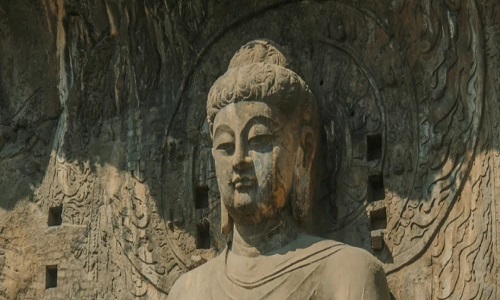
.jpg)
2. Majestic Cliffside Grottoes
Carved directly into limestone cliffs, the grottoes form an extraordinary open-air museum of stone artistry. Visitors can walk along pathways overlooking the Yi River, discovering hidden chambers and niches that once served as places of meditation and worship. The grand scale of the caves, combined with their intricate interiors, creates a powerful sense of awe and peace. Light and shadow play across the rock faces, bringing the carvings to life as the sun shifts throughout the day. This setting not only highlights the artistry of the site but also its harmony with nature, offering a serene experience that bridges history and spirituality. The layout of the grottoes reflects both engineering ingenuity and religious symbolism, with caves of varying sizes arranged in accordance with ancient geomantic principles. Each grotto tells its own story, representing different dynasties, artistic influences, and devotional practices that together reveal the evolution of Chinese Buddhist culture.
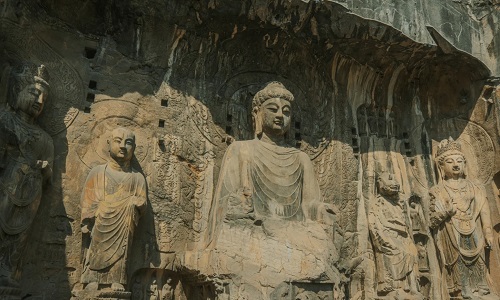
.jpg)
3. Timeless Historical Architecture
Beyond the caves, remnants of temples, pagodas, and inscriptions offer a glimpse into the grand religious complexes that once flourished here. These architectural traces help visitors imagine the spiritual vibrancy and cultural significance of Luoyang during its golden dynastic eras. Ancient steles engraved with poems and records reveal the devotion of emperors, monks, and scholars who once visited the site. Even the weathered foundations and stone stairways evoke the passage of time, inviting travelers to walk in the footsteps of history. Together, these elements create a living narrative of faith, culture, and artistry that continues to inspire visitors today. The surrounding ruins also demonstrate how Buddhism influenced Chinese architecture, blending Indian-inspired forms with native aesthetics. Exploring these remains allows travelers to appreciate the unity between religious space and natural landscape—a hallmark of classical Chinese design—and to witness how spiritual devotion shaped the built environment across centuries.
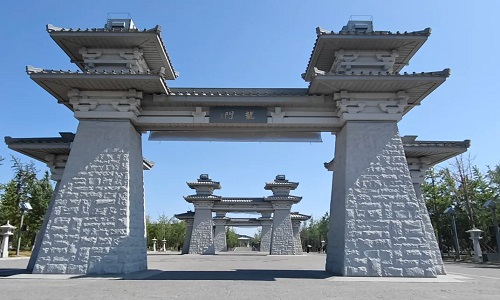
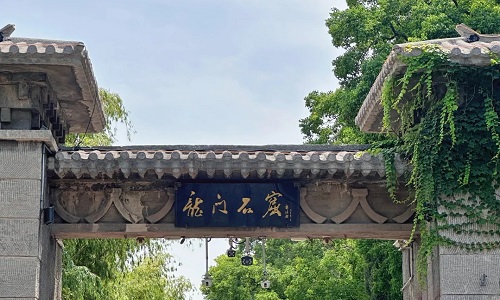
Top Highlights: What to See at the Longmen Grottoes
Exploring the Longmen Grottoes is like stepping into a vast open-air gallery carved in stone. Every cave, statue, and inscription reveals a different chapter of China’s artistic and spiritual journey. Whether you’re drawn to the monumental grandeur of the main temples or the quiet beauty of hidden carvings, the site offers endless discoveries. Visitors can admire the awe-inspiring Buddhist sculptures, study ancient calligraphy, uncover secret grottoes tucked into the cliffs, and experience how the play of light and nature transforms the scenery throughout the seasons. What makes the Longmen Grottoes so captivating is not just their immense scale, but the sense of life and devotion that lingers in every detail—each statue and inscription whispering stories of emperors, monks, and artisans who contributed to this sacred masterpiece over more than a millennium.
1. Major Caves and Statues: Fengxian Temple, Vairocana Buddha, and Thousand Buddha Caves
The Fengxian Temple is the heart of the Longmen Grottoes and home to the magnificent Vairocana Buddha, a 17-meter masterpiece that embodies the height of Tang Dynasty sculpture. The Buddha’s serene yet powerful expression, flanked by guardian deities and disciples, symbolizes compassion and majesty. Nearby, the Thousand Buddha Caves offer a striking contrast—hundreds of small niches filled with delicate carvings of Buddhas and Bodhisattvas. Together, these spaces reveal both the grandeur of imperial patronage and the quiet devotion of ordinary believers, showcasing the full range of artistry across dynasties. Standing before these colossal figures, visitors can sense the balance between divinity and humanity—a reflection of Tang ideals that combined elegance, strength, and spiritual grace. The surrounding rock walls also bear intricate reliefs and inscriptions that provide insight into the religious and political life of ancient Luoyang.
.jpg)
.jpg)
2. Inscriptions and Calligraphy: Tang Dynasty Scripts and Historical Records
Beyond the statues, the Longmen Grottoes are a treasure trove of ancient inscriptions and calligraphy, often referred to as a “stone library of Chinese history.” Many of these writings date back to the Tang Dynasty, when scholars and monks recorded religious dedications, poems, and royal decrees. The most famous among them is the Inscription of the Twenty Inscriptions Cave, which showcases elegant Tang script and literary refinement. These records not only provide valuable historical insight into the people who created and funded the grottoes but also stand as masterpieces of Chinese calligraphic art, admired for their beauty, rhythm, and precision. Visitors who take time to read these carvings can trace the spiritual aspirations and artistic sensibilities of an era when calligraphy was not just a form of writing, but a reflection of moral character and inner cultivation. Each inscription transforms the stone walls into living pages of Chinese civilization.
.jpg)
.jpg)
3. Smaller Caves and Hidden Carvings: Gems for the Curious Explorer
While the grand temples draw the most attention, the grottoes’ smaller caves hold countless hidden treasures for those who look closer. Tucked along winding cliffside paths are tiny chambers filled with exquisite carvings, each revealing a distinct artistic personality. Some feature miniature Buddhas with serene expressions, while others contain carvings depicting daily life or mythological scenes. Many of these lesser-known spots remain quiet and uncrowded, offering a moment of peace and discovery away from the main tourist flow. For photographers and history lovers, exploring these secluded corners provides a deeper, more intimate connection with the site’s enduring spirit. Some hidden caves, like those dedicated by families or monks, bear personal inscriptions or rare artistic motifs not found elsewhere—making them precious glimpses into private devotion and creativity that complement the grandeur of the larger grottoes.
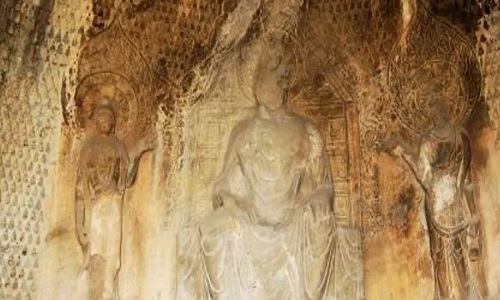
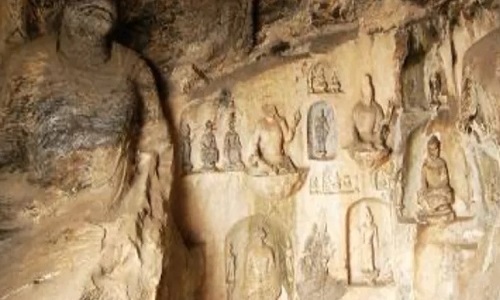
4. Seasonal Views: How Lighting and Weather Enhance the Carvings
The beauty of the Longmen Grottoes changes with every season and hour of the day. In spring, blooming flowers along the Yi River frame the cliffs with vibrant color; in summer, sunlight casts warm golden tones that highlight the carvings’ depth and texture. Autumn brings crisp air and soft light, perfect for photography, while winter’s stillness enhances the solemn grandeur of the stone figures. Morning and late afternoon offer the best lighting, when the sun’s angle brings out the finest details of the carvings. Each visit feels unique—nature and artistry working together to create an ever-changing masterpiece. On misty days, the grottoes seem shrouded in mystery, as if emerging from the clouds of history. Whether bathed in sunlight or cloaked in fog, the site radiates timeless beauty, inviting visitors to slow down and appreciate the tranquil rhythm of this ancient landscape.
.jpg)
.jpg)
Local Experiences and Cultural Immersion Near the Longmen Grottoes
A visit to the Longmen Grottoes can be greatly enriched by exploring nearby cultural sites and participating in immersive activities. Luoyang, one of China’s ancient capitals, offers a wealth of traditional experiences that complement the grottoes, allowing travelers to dive deeper into local heritage. From hands-on workshops to seasonal festivals and authentic culinary experiences, these activities give visitors a fuller understanding of the region’s history, art, and daily life, creating lasting memories beyond the stone carvings themselves. By combining the grottoes with these local experiences, travelers can appreciate the broader context of Chinese history, including religious practices, artistic evolution, and the daily lives of past and present communities.
1. Visiting Nearby Temples and Traditional Sites
The area around the Longmen Grottoes features several historic temples and cultural sites worth exploring. The Grottoes’ own temples, like Fengxian and Binyang, provide insight into ancient religious practices and architecture. Nearby, smaller temples and pagodas reflect centuries of devotion and offer peaceful spots for reflection. Visitors can walk through these sacred spaces, admire intricate woodwork and stone carvings, and learn about the monks and scholars who once lived and practiced here. These visits enhance understanding of the spiritual and historical context of the grottoes, providing a richer cultural experience. Additionally, exploring these sites allows travelers to see how religious, artistic, and political influences intermingled in Luoyang, giving a holistic perspective on the city’s role as a historical and cultural hub.
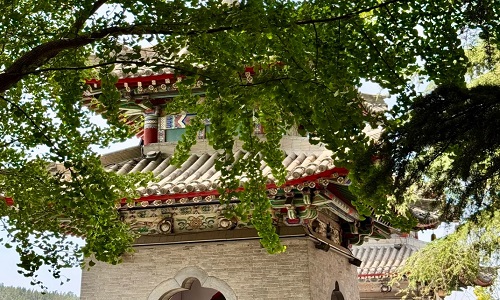
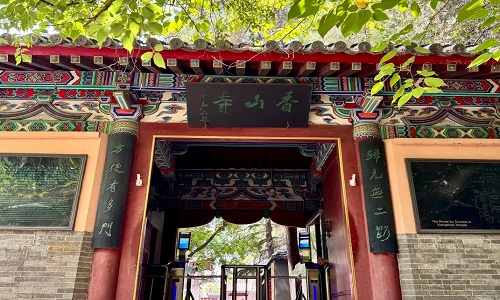
2. Hands-On Activities: Calligraphy Workshops and Buddhist Art Demonstrations
For a more interactive experience, travelers can participate in calligraphy workshops or Buddhist art demonstrations offered in Luoyang’s cultural centers. Guests can try their hand at traditional Chinese writing, learn brush techniques, or create small replicas of grotto-style carvings under expert guidance. These activities are ideal for families, students, or art enthusiasts seeking a tangible connection to the region’s artistic heritage. Engaging in hands-on learning allows visitors to appreciate the skill and patience required for centuries-old craftsmanship, making the grottoes’ carvings feel more personal and meaningful. Beyond artistry, these workshops also teach participants about the philosophy and symbolism behind Buddhist motifs, providing a deeper cultural understanding and a memorable, educational experience.

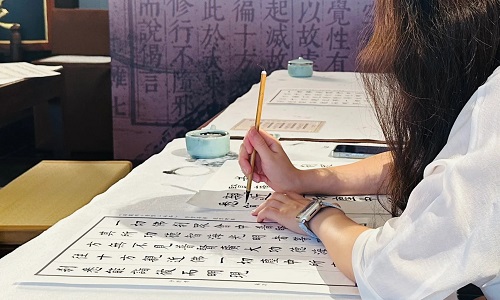
3. Seasonal Festivals in Luoyang That Complement the Grotto Visit
Timing your visit to coincide with Luoyang’s seasonal festivals can enhance the cultural experience. The Luoyang Peony Festival in spring showcases the city’s famous flowers with parades, performances, and exhibitions, creating a vibrant backdrop for photography and exploration. Autumn festivals celebrate traditional arts, local cuisine, and folk performances, giving visitors a glimpse of the city’s living culture. These events complement the grottoes’ historical significance, offering both visual splendor and interactive opportunities that deepen understanding of local traditions. Attending festivals also allows travelers to engage with local residents, sample street foods, and participate in cultural rituals, making the visit more immersive and enriching while connecting the past with contemporary life.
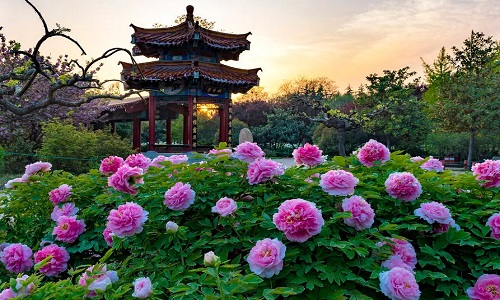
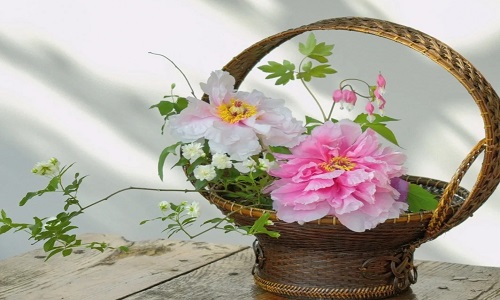
4. Local Cuisine Recommendations After the Grotto Tour
After exploring the grottoes, sampling Luoyang’s local cuisine is a must. Signature dishes include water-boiled noodles with mutton, steamed stuffed buns, and Luoyang-style dumplings, which offer authentic flavors reflecting centuries of culinary tradition. Local tea houses and family-run restaurants provide a cozy environment to relax while enjoying these specialties. For families, many restaurants offer kid-friendly options and casual dining spaces. Pairing cultural exploration with traditional cuisine allows visitors to fully engage their senses, ending a day of sightseeing with delicious tastes that reflect Luoyang’s rich heritage. Additionally, enjoying local food gives travelers insight into the region’s agricultural and culinary practices, highlighting how historical influences continue to shape modern Luoyang cuisine.
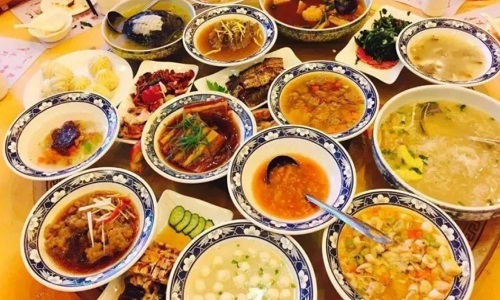
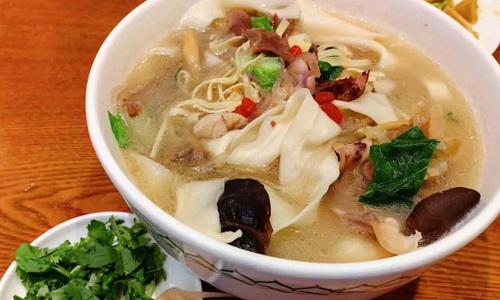
History and Cultural Significance of the Longmen Grottoes
The Longmen Grottoes represent one of the most profound achievements of Chinese civilization, blending religion, art, and history into a monumental cultural legacy. Spanning more than 1,500 years of continuous creation, the site illustrates the deep connection between Buddhist faith and Chinese aesthetics. From imperial sponsorship to the devotion of countless artisans and monks, every carving and inscription tells a story of transformation—of a foreign religion adapting to Chinese soil and flourishing as a cornerstone of national culture. Today, the Longmen Grottoes not only stand as a treasure of Buddhist art but also as a living record of the nation’s evolving spiritual and artistic identity.
1. Origins and Development: From Northern Wei to Tang Dynasty Peak
The creation of the Longmen Grottoes began during the Northern Wei Dynasty (386–534 AD), when the imperial family moved the capital to Luoyang and promoted Buddhism as a state religion. The earliest carvings reflect a strong Central Asian influence, characterized by elongated figures and simple robes. As centuries passed, the grottoes continued to evolve, reaching their artistic zenith during the Tang Dynasty (618–907 AD). Under Tang rule, Buddhist art became more refined, naturalistic, and infused with Chinese grace. The grandeur of this period is best seen in the Fengxian Temple, commissioned by Emperor Gaozong and Empress Wu Zetian, which features the magnificent Vairocana Buddha, symbolizing the empire’s spiritual and political power.
2. Artistic Evolution: From Carvings to Cultural Integration
The artistic journey of the Longmen Grottoes reflects the gradual sinicization of Buddhist art. Early statues display foreign stylistic elements introduced through the Silk Road, while later works show distinctly Chinese features—rounder faces, softer expressions, and elegant drapery. In addition to the statues, the grottoes are adorned with thousands of inscriptions, scriptures, and steles, providing invaluable records of historical events, donors, and artistic trends. These carvings not only depict Buddhist themes but also embody Chinese philosophies of balance, harmony, and compassion. The integration of Buddhism with native traditions such as Confucian ethics and Taoist aesthetics helped shape a unique cultural synthesis that deeply influenced later Chinese art and thought.
3. Cultural Impact: Buddhism’s Legacy in China
The Longmen Grottoes played a pivotal role in the spread and localization of Buddhism in China. As a major religious center supported by emperors, monks, and laypeople, the site served as a hub for artistic innovation and spiritual exchange. The visual language developed here set standards for Buddhist sculpture across East Asia, inspiring creations in Korea and Japan. Moreover, the grottoes’ emphasis on realism, harmony, and moral symbolism influenced later Chinese painting, calligraphy, and architecture. Today, Longmen continues to symbolize the enduring dialogue between faith and art—an eternal testament to how Buddhism took root in Chinese soil and blossomed into one of the world’s most refined cultural traditions.
Visiting Tips and Logistics for the Longmen Grottoes
Planning a visit to the Longmen Grottoes can make all the difference in fully enjoying this UNESCO World Heritage Site. With its vast area, historical richness, and stunning scenery along the Yi River, careful preparation ensures that visitors can see the highlights comfortably and at the best times. From choosing the ideal season to understanding ticketing and transportation options, these tips will help you make the most of your experience while navigating the site efficiently and safely. By planning ahead, you can avoid peak crowds, allocate enough time for photography, and fully immerse yourself in the artistic and spiritual atmosphere of this iconic destination.
1. Best Time to Visit: Spring and Autumn
The most popular times to visit the Longmen Grottoes are spring and autumn. In spring, the surrounding hills and riverbanks come alive with blooming flowers, especially the famous peonies of Luoyang, creating a colorful and fragrant backdrop for photography. Autumn offers mild temperatures, clear skies, and fewer tourists, making it perfect for leisurely exploration. Summer can be hot and crowded, while winter, though quiet, can be chilly, so dressing in layers is advisable. Visiting during these optimal seasons also provides better lighting for photography, as softer sunlight enhances the textures of the carvings and the natural beauty of the cliffs.
2. Opening Hours, Entrance Fees, and Ticketing Options
The Longmen Grottoes are generally open from 8:00 AM to 5:00 PM, though hours may vary slightly by season. Tickets typically cost around 100–120 CNY for adults, with discounted rates for students, seniors, and children. Many visitors opt to buy tickets in advance online to skip lines, while on-site ticket offices offer flexibility for spontaneous plans. Some passes include access to additional areas, such as museum exhibits or smaller grotto complexes. Checking updated information before arrival ensures you have the correct fees and any seasonal promotions or restrictions. Being aware of these details also helps visitors plan their day efficiently, allowing enough time to explore both major caves and hidden gems.
3. Guided Tours vs. Self-Guided Exploration
Visitors can choose between guided tours and self-guided exploration, depending on their interests. Guided tours provide expert insight into the historical, cultural, and artistic significance of the grottoes, highlighting details that may otherwise be overlooked. Self-guided exploration allows for a flexible pace and the freedom to linger at favorite spots, ideal for photography enthusiasts or those who prefer quiet reflection. Combining both approaches—starting with a guided overview and then wandering independently—can offer the best of both worlds, giving context while allowing personal discovery. Additionally, some guides can help interpret inscriptions and carvings that are difficult to understand without historical knowledge, enriching the overall experience.
4. Accessibility Tips for Elderly Travelers or Families
The grottoes involve walking along uneven pathways, stairs, and cliffside trails, so comfortable shoes are essential. Elderly visitors or families with young children may consider using wheelchair rental services or mobility aids available at the site, and taking regular rest stops at shaded areas. Bringing water, snacks, and sun protection ensures comfort during longer visits. Many of the main caves are accessible via shorter, well-paved routes, allowing visitors with limited mobility to still enjoy iconic highlights like Fengxian Temple and the Vairocana Buddha. Planning for rest breaks and pacing your visit makes the trip enjoyable for all ages, ensuring no one feels rushed or exhausted while exploring the extensive site.
Transportation Options from Beijing to Luoyang
Traveling from Beijing to Luoyang is convenient and flexible, offering several options for different budgets and schedules. Whether you prefer speed, comfort, or affordability, planning your transportation in advance ensures a smooth journey and allows you to maximize your time exploring Luoyang’s historic sites, including the Longmen Grottoes. Each mode of travel has its unique advantages, from high-speed bullet trains to overnight rail journeys and domestic flights. Additionally, understanding the logistics of transfers within Luoyang, such as taxis, buses, or guided tour pick-ups, helps visitors save time and avoid confusion, making the trip more enjoyable and stress-free.
1. Bullet Train: Fast, Comfortable, and Convenient
The high-speed bullet train from Beijing to Luoyang is one of the most popular options. The journey typically takes around 4.5 to 5.5 hours, depending on the train type, with multiple departures daily. Tickets cost approximately 250–400 CNY for second-class seats, with first-class options available for more comfort. Bullet trains are ideal for travelers who want a fast, reliable, and scenic journey, passing through the heart of central China while avoiding traffic delays. They feature spacious seating, modern facilities, and smooth rides, making long-distance travel comfortable. Booking tickets in advance online or at stations is recommended, especially during holidays, to secure preferred departure times and seating arrangements.
2. Flights: Luoyang Beijiao Airport Options
Flights from Beijing to Luoyang Beijiao Airport (LYA) offer a travel time of about 1.5 hours, making it the quickest option in terms of flight duration. Airlines operate multiple flights daily, though schedules may be limited compared to trains. Pros include speed and convenience for those with tight itineraries, while cons include airport security procedures, transfer time to the city center (around 40 minutes), and higher cost compared to trains. Flights are best suited for travelers prioritizing time savings over cost, especially when combining air travel with other domestic connections in China. Arranging airport transfers in advance can make the journey seamless and reduce waiting time, ensuring a smooth start to your visit.
3. Overnight Trains: Budget-Friendly and Practical
For budget-conscious travelers, overnight trains from Beijing to Luoyang are an excellent option. These trains usually depart in the evening and arrive the next morning, allowing passengers to sleep through most of the journey and save on accommodation costs. Ticket prices range from 150–300 CNY, depending on the class of berth. While slower than bullet trains, overnight trains provide a unique experience of China’s railway culture and are practical for those who want to maximize daytime sightseeing upon arrival. These trains also allow travelers to interact with locals and enjoy a more traditional travel experience. Travelers should book early, particularly during peak seasons, to ensure availability of sleeping berths.
4. Tips for Seamless Transfers to the Longmen Grottoes
Once in Luoyang, reaching the Longmen Grottoes from either the train station or airport is straightforward. Taxis and ride-hailing services provide the fastest door-to-door option, taking about 30–40 minutes. Local buses also connect the city center to the grottoes for those seeking a more economical choice. Many hotels and guided tours include pick-up and drop-off services, which simplify navigation for first-time visitors. Planning transfers in advance, confirming pick-up points, and checking traffic conditions ensures a smooth, stress-free start to your visit, allowing more time to explore the grottoes’ stunning sculptures and serene landscapes. Having clear directions and knowing estimated travel times can also help visitors coordinate with opening hours and tour schedules effectively.
Accommodation Suggestions
Luxury Hotels
For travelers seeking premium comfort, several luxury hotels are located near the Longmen Grottoes, offering spacious rooms, modern amenities, and often views of the Yi River and surrounding cliffs. These hotels provide concierge services, on-site dining, fitness centers, and spa facilities, allowing visitors to unwind after a full day of sightseeing. Many also offer shuttle services to the grottoes and other Luoyang attractions, making transportation effortless. Staying at a luxury property ensures a serene and stress-free experience, while the combination of elegant décor and scenic surroundings creates an unforgettable backdrop for a memorable stay. Additionally, some hotels include curated cultural experiences, such as tea ceremonies or calligraphy classes, allowing guests to enjoy both relaxation and local culture without leaving the property.
1. Luoyang Grand Hotel
Situated just a short drive from the Longmen Grottoes, the Luoyang Grand Hotel offers a perfect base for visitors exploring this UNESCO World Heritage site. The hotel blends modern comfort with subtle Chinese cultural touches, providing spacious rooms with air conditioning, flat-screen TVs, mini-bars, and high-speed internet. Guests can enjoy traditional Chinese cuisine inspired by Luoyang flavors or international dishes in the on-site restaurants. Facilities include a fitness center, sauna, and relaxing lounge areas, making it easy to unwind after a day of sightseeing. Its convenient location allows for quick access to the grottoes, nearby temples, and scenic river paths, enabling guests to fully experience the spiritual and artistic treasures of the area while enjoying a comfortable and memorable stay.
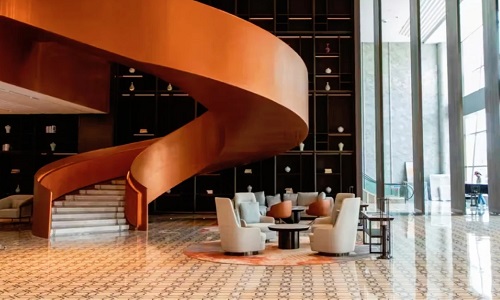
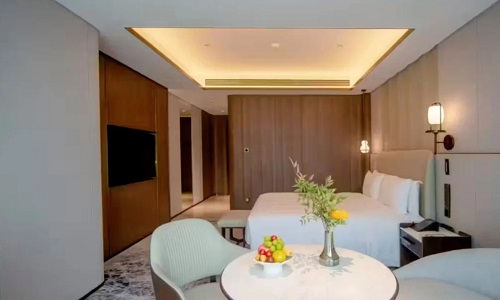
Address: No. 6 Luoshen Road, Chanhe District, Luoyang, Henan 471000, China
Phone: +86 379 6436 8888
2. Marriott Luoyang
Marriott Luoyang provides a comfortable and culturally inspired stay for visitors eager to explore the Longmen Grottoes. The hotel’s spacious rooms feature elegant furnishings, plush bedding, work desks, and large windows that offer views of the surrounding hills and the Yi River. Guests can enjoy Henan specialties and international cuisine at the on-site restaurants, while the lobby lounge offers a relaxing space to unwind after a day of sightseeing. Facilities include a fitness center, indoor pool, and business services to accommodate various needs. Located just a short drive from the Longmen Grottoes, the hotel allows easy access to the historic caves, nearby temples, and scenic pathways along the cliffs. Attentive staff and thoughtful amenities ensure that every stay combines comfort with convenience, providing an ideal base for discovering the artistic and spiritual treasures of the area.
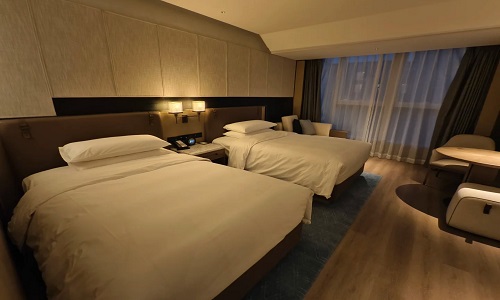
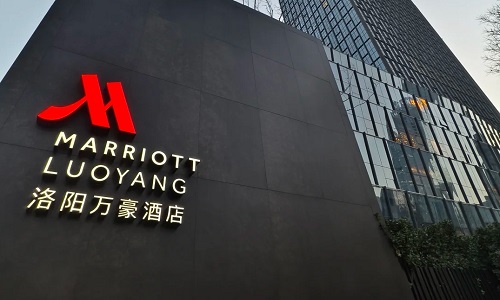
Address: No. 1 Zhongzhou Road, Chanhe District, Luoyang, Henan 471000, China
Phone: +86 379 6999 8888
Mid-Range Hotels
Mid-range hotels near the Longmen Grottoes strike a balance between comfort and affordability, offering clean rooms, modern facilities, and easy access to transport links. These hotels often include breakfast, Wi-Fi, and helpful staff who can assist with local sightseeing tips. Proximity to restaurants, shops, and bus or taxi stops makes these properties especially convenient for families and solo travelers. Guests can enjoy comfortable accommodations without overspending while still benefiting from efficient services and practical amenities. Choosing a mid-range hotel is ideal for travelers who want a hassle-free stay, combining accessibility to the grottoes with options for exploring Luoyang city center and nearby cultural attractions.
1. Holiday Inn Express Luoyang City Center
Holiday Inn Express Luoyang City Center offers a comfortable and practical base for travelers visiting the Longmen Grottoes. The hotel’s well-appointed rooms include modern amenities such as high-speed Wi-Fi, flat-screen TVs, and functional workspaces, making it suitable for both leisure and business guests. Guests can enjoy a complimentary breakfast before heading to the grottoes or nearby cultural sites, and a variety of local restaurants are within easy reach for lunch or dinner. Its convenient location allows quick access to the Longmen Grottoes, Fengxian Temple, and scenic paths along the Yi River. With helpful staff available to provide directions and tour recommendations, the hotel ensures a convenient, enjoyable, and comfortable stay for visitors eager to explore the historic and artistic treasures of Luoyang.
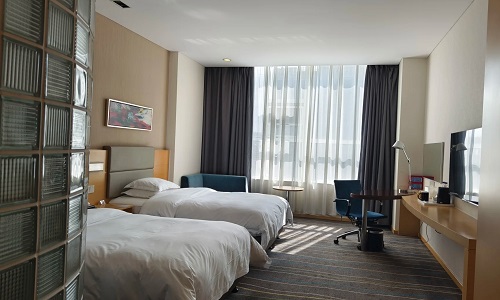
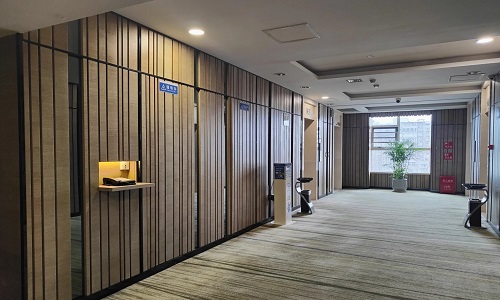
Address: No. 1 Zhongzhou Road, Luoyang, Henan 471000, China
Phone: +86 379 6060 8888
2. The Reserve Hotel Luoyang, Curio Collection by Hilton
Located just a short drive from the Longmen Grottoes, The Reserve Hotel Luoyang offers a comfortable and convenient stay for travelers eager to explore the area’s historical and cultural treasures. The hotel features 146 well-appointed rooms, many with views of the Yi River or surrounding hills, providing a relaxing environment after a day of sightseeing. Guests can enjoy on-site dining with Chinese and international cuisine, unwind in the fitness center, or take a refreshing swim in the indoor pool. Additional amenities include meeting facilities, concierge services, and cozy lounges for relaxation. Its location allows easy access to the Longmen Grottoes, Fengxian Temple, and other nearby attractions, making it an ideal base for families, solo travelers, and cultural enthusiasts alike. With attentive staff and practical facilities, the hotel ensures a convenient and enjoyable stay for visitors discovering the artistic and spiritual heritage of Luoyang.
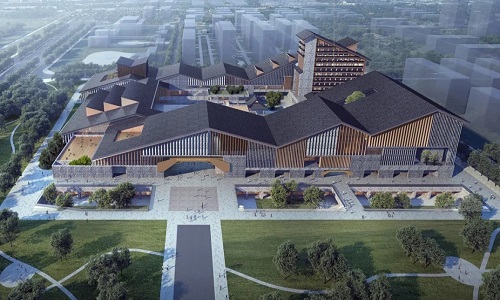

Address: Shisanfang Cultural District, Luoyang, Henan, China
Phone: +86 379 1234 5678
Boutique Guesthouses
For a more authentic, immersive experience, boutique guesthouses near the grottoes offer traditional architecture, personalized service, and a warm, home-like atmosphere. These smaller properties often feature courtyard-style layouts, local décor, and locally sourced meals, allowing guests to feel connected to Luoyang’s history and culture. Staying at a boutique guesthouse provides opportunities to interact with local hosts, learn about customs, and participate in cultural activities such as tea tasting or calligraphy sessions. These accommodations are perfect for travelers seeking a more intimate and unique experience, offering a deeper connection to the region’s heritage while remaining within easy reach of the Longmen Grottoes and other nearby attractions.
1. Zhuying Wanghe Garden Hotel
Located near the Yi River, Zhuying Wanghe Garden Guesthouse provides a cozy and intimate retreat for visitors exploring the Longmen Grottoes and surrounding cultural sites. The guesthouse features well-designed rooms with modern comforts, comfortable bedding, and large windows offering views of the river and nearby gardens. Guests can enjoy a freshly prepared breakfast with both Chinese and Western options, relax in the tranquil garden spaces, or spend time in lounge areas decorated with local cultural touches. Its convenient location allows easy access to the Longmen Grottoes, Fengxian Temple, and other historic landmarks, making it ideal for travelers seeking a quiet and personalized experience. The guesthouse also provides concierge services, local tour guidance, and shuttle arrangements to simplify travel. With its peaceful riverside setting, friendly hospitality, and attention to detail, Zhuying Wanghe Garden Guesthouse offers a warm, boutique-style stay that blends comfort with cultural immersion.
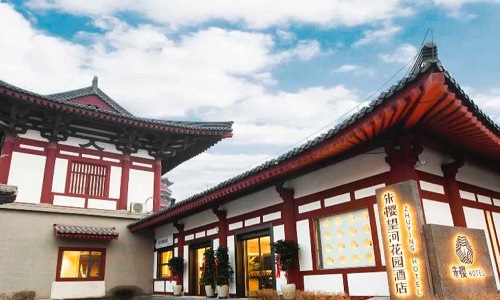
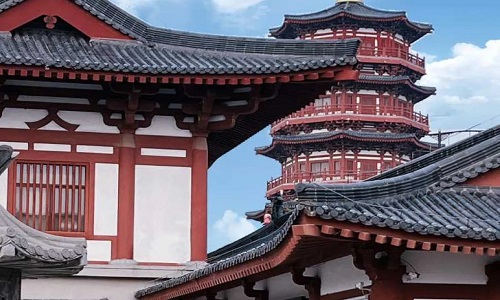
Address: Luo River, Luoyang, Henan, China
Phone: +86 379 8765 4321
2. Bohemia Boutique Hotel
Bohemia Boutique Guesthouse offers a stylish and intimate stay for travelers visiting the Longmen Grottoes and central Luoyang. Situated near the Yi River, the guesthouse blends modern comfort with subtle traditional Chinese décor, creating a warm and culturally inspired atmosphere. Rooms are thoughtfully designed with amenities such as high-speed Wi-Fi, flat-screen TVs, and comfortable furnishings, with some rooms overlooking serene courtyards or nearby streets. Guests can enjoy a carefully prepared breakfast featuring local and international options, relax in cozy lounge areas, and receive personalized guidance from attentive staff. Its convenient location provides easy access to the Longmen Grottoes, Fengxian Temple, White Horse Temple, and nearby cultural streets, making it ideal for exploring Luoyang’s historic and artistic treasures. Bohemia Boutique Guesthouse combines comfort, charm, and cultural immersion, offering travelers a memorable base from which to experience the city’s heritage.
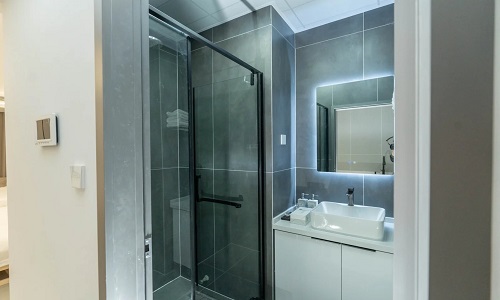
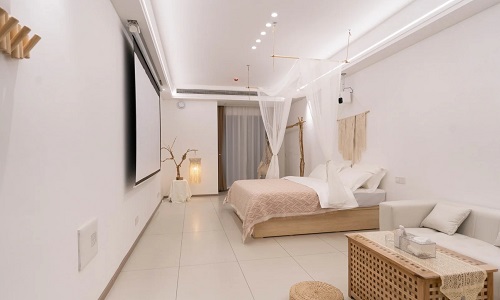
Address: Intersection of Zhongzhou Road and Fanglin Road, Luoyang, Henan 471000, China
Phone: +86 379 6333 8888
Photography and Exploration Guide for the Longmen Grottoes
The Longmen Grottoes offer endless opportunities for photography and exploration, from colossal Buddhas to intricate carvings and stunning cliffside views. Capturing the site’s beauty requires some planning, as lighting, angles, and timing can dramatically affect your photos. Whether you are a professional photographer, a casual enthusiast, or simply documenting your travels, knowing the best times, gear, and techniques ensures you make the most of your visit. Beyond photography, taking time to explore the grottoes’ hidden corners and pathways enriches the experience, revealing details and perspectives that many visitors miss.
1. Best Times for Photography: Early Morning, Golden Hour, and Seasonal Highlights
For the most striking photos, plan your visit during the early morning or late afternoon golden hour, when sunlight softly illuminates the carvings and casts long, dramatic shadows across the cliffs. Seasonal changes also add variety—spring brings vibrant blooms and fresh greenery along the Yi River, while autumn offers warm tones, crisp air, and clear skies perfect for panoramic shots. Winter’s muted light enhances the solemnity of the stone figures, creating moody and contemplative imagery. Visiting during these optimal times allows photographers to capture both the grandeur and subtle details of the grottoes, while avoiding harsh midday sunlight or crowded conditions.
2. Tips for Capturing Details of Carvings and Cliffside Panoramas
To fully showcase the Longmen Grottoes, combine close-up shots of intricate carvings with wide-angle panoramas of cliffside grottoes. Use a slow, deliberate pace to focus on texture, symmetry, and expressions of the statues. Pay attention to light and shadow—early sunlight often highlights fine details that may otherwise be missed. Walking along elevated pathways gives unique vantage points for capturing the scale and layout of the site, while hidden caves offer intimate perspectives of smaller carvings. Experimenting with angles and compositions allows photographers to tell both the monumental and personal stories embedded in the stone.
3. Recommended Gear: Cameras, Lenses, and Tripods
For photographing the grottoes, a DSLR or mirrorless camera with wide-angle and zoom lenses is ideal. Wide-angle lenses help capture panoramic views of cliffside temples, while zoom lenses allow close-up shots of distant carvings without losing detail. A sturdy tripod is recommended for low-light caves and early morning or late afternoon shots, ensuring sharp images when using slow shutter speeds. Extra batteries and memory cards are essential for extended exploration, as some areas require careful navigation and may take hours to fully capture. For casual visitors, a high-quality smartphone with a wide-angle lens can also achieve impressive results if you focus on composition and lighting.
4. Drone Restrictions and Alternatives for Aerial Perspectives
While drones are prohibited within the Longmen Grottoes to protect cultural heritage and ensure visitor safety, there are alternatives for aerial-style perspectives. Elevated viewpoints along the cliffside paths provide sweeping vistas over the Yi River and grotto complexes, ideal for wide landscape shots. Some nearby hills offer additional vantage points for panoramic photography, especially during sunrise or sunset. Combining these elevated perspectives with careful framing can replicate drone-like images while respecting site regulations. Observant photographers can also use reflections, river views, and natural framing elements to create dynamic compositions that convey the scale and majesty of this historic site.
Family-Friendly and Interactive Experiences at the Longmen Grottoes
The Longmen Grottoes are not only a cultural and historical treasure but also an engaging destination for families traveling with children. With its mix of open-air paths, monumental sculptures, and interactive exhibits, the site offers educational and fun experiences for younger visitors while allowing parents to enjoy the rich artistry and history. Planning ahead and knowing which areas are most suitable for children ensures a safe, comfortable, and memorable visit for the whole family. The combination of exploration, storytelling, and hands-on learning makes the grottoes a destination that appeals to all ages.
1. Highlights Suitable for Children: Open-Air Paths, Large Statues, and Storytelling Tours
Children are often captivated by the open-air pathways that wind along the cliffs and overlook the Yi River, providing both adventure and stunning views. The giant statues, like the Vairocana Buddha, naturally spark curiosity and awe, offering opportunities to learn about Buddhist culture and art in an accessible way. Many guided tours incorporate storytelling elements, presenting myths, legends, and historical anecdotes that bring the grottoes to life for young minds. These engaging narratives help children connect with the site while keeping them entertained and attentive throughout the visit.
2. Interactive Museum Exhibits Near the Grottoes
Adjacent to the Longmen Grottoes, the Longmen Grottoes Museum offers interactive exhibits designed to enhance family learning. Children can explore replicas of carvings, try hands-on art activities, and view multimedia presentations that explain the history, techniques, and cultural significance of the site. These exhibits provide context for what they see outdoors, helping younger visitors understand the scale, craftsmanship, and stories behind the statues and inscriptions. Combining museum time with the outdoor exploration allows families to enjoy a balanced, engaging experience that mixes education with entertainment.
3. Safety and Comfort Tips for Families with Kids
The grottoes involve walking along uneven paths, stairs, and cliffside trails, so comfortable shoes and sun protection are essential. Families should carry water, snacks, and a first-aid kit, and keep younger children close on elevated paths. Using strollers where possible and taking frequent breaks ensures that children remain comfortable and engaged. Teaching kids about safety around cliffs and crowded areas also helps prevent accidents. Planning your visit with these precautions ensures that both adults and children can enjoy the site fully without stress or fatigue.
4. Nearby Parks and Facilities for Rest Breaks
Several parks and rest areas near the Longmen Grottoes provide ideal spaces for families to relax between explorations. The Yi River scenic area offers shaded walkways, seating, and open spaces where children can play safely. On-site facilities include restrooms, cafés, and shaded pavilions, allowing families to recharge while enjoying views of the cliffs and river. Taking these breaks not only enhances comfort but also gives children time to absorb what they’ve seen, making the overall visit more enjoyable. Combining exploration with downtime ensures that a family trip to the Longmen Grottoes is memorable and pleasant for everyone.
Surrounding Attractions and Day Trip Ideas Near the Longmen Grottoes
While the Longmen Grottoes are the main highlight of Luoyang, the surrounding area offers additional cultural and historical attractions that make excellent day trips. Exploring these sites allows visitors to gain a deeper understanding of the city’s ancient heritage and vibrant local life. From centuries-old temples to bustling old streets filled with handicrafts, these destinations complement the grotto experience, offering a well-rounded glimpse into Luoyang’s past and present. Planning a day trip to these nearby attractions adds variety to your itinerary and enriches your cultural exploration.
1. White Horse Temple: History and Religious Significance
Located just a short distance from the Longmen Grottoes, the White Horse Temple is widely regarded as the first Buddhist temple in China, established in 68 AD during the Eastern Han Dynasty. Its architecture harmoniously blends traditional Chinese design with Buddhist influences, featuring ornate roofs, intricately carved beams, and serene courtyards. Inside, visitors can admire ancient statues, inscriptions, and relics that chronicle the introduction and spread of Buddhism in China. Guided tours offer fascinating stories about the temple’s founding monks, imperial patrons, and pilgrims who traveled centuries ago to worship and study. Beyond its historical and artistic significance, the temple remains an active site of devotion, with daily rituals, chanting sessions, and ceremonial offerings that provide a living glimpse into Buddhist practice. The tranquil environment, combined with its rich history, makes the White Horse Temple an essential complement to the awe-inspiring artistry of the Longmen Grottoes, offering visitors both cultural insight and spiritual reflection.
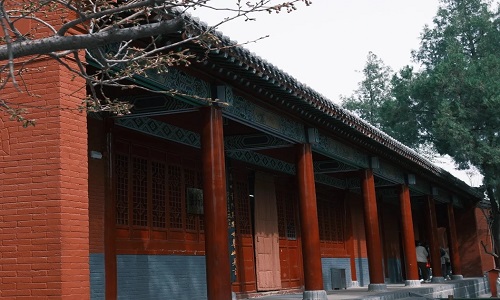
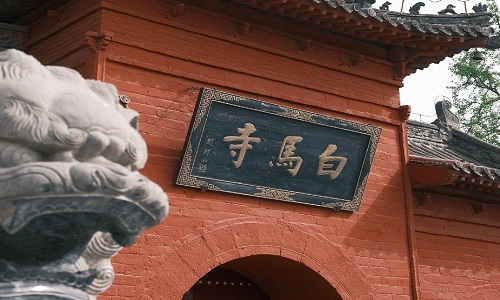
2. Luoyang Old City: Markets, Streets, and Local Handicrafts
Luoyang Old City presents a vibrant contrast to the serene grandeur of the Longmen Grottoes, immersing visitors in the lively atmosphere of a city steeped in history. The narrow streets are lined with traditional shops selling handicrafts, souvenirs, and regional specialties, from delicate paper cuttings to intricately carved jade pieces. Street vendors offer local snacks such as water-boiled noodles and Luoyang-style dumplings, while small cafés provide comfortable spots to rest and watch daily life unfold. Walking through the Old City, travelers can observe skilled artisans at work, learn about traditional crafts, and interact with locals to gain insight into Luoyang’s cultural heritage. The area’s historic architecture, featuring well-preserved courtyard homes and ancient gateways, creates an authentic backdrop for exploration. Visiting the Old City not only complements the historical and spiritual experience of the Longmen Grottoes but also allows travelers to engage directly with the living traditions and contemporary culture of Luoyang, creating a richer, more immersive journey through this ancient capital.
.jpg)
.jpg)
FAQs & Insider Advice for Visiting the Longmen Grottoes
Visiting the Longmen Grottoes raises many common questions, especially for first-time travelers or those planning a culturally immersive trip. Understanding the best times to visit, available tours, and ways to combine nearby attractions can make the experience smoother and more enjoyable. Insider tips from local guides help visitors maximize their time, avoid crowds, and gain deeper insight into the history, art, and spiritual significance of this UNESCO World Heritage site. The following FAQs provide practical guidance for planning a memorable and well-organized visit.
1. How Long Does It Take to Explore Longmen Grottoes?
Exploring the Longmen Grottoes thoroughly typically takes 3 to 5 hours, depending on your pace and interest in art, history, and photography. Visitors focusing on the main caves and famous statues, such as the Fengxian Temple and Vairocana Buddha, may complete their visit in about three hours. Those wishing to explore smaller caves, hidden carvings, and inscriptions, or spend time in the museum learning about calligraphy and grotto history, should plan for a longer visit. Allowing extra time for rest, photography, and guided explanations ensures a more relaxed and enriching experience.
2. What Is the Best Season to Visit Luoyang and the Grottoes?
The most recommended seasons to visit are spring and autumn. Spring, especially during the Luoyang Peony Festival, offers mild weather and colorful landscapes, creating a picturesque backdrop for the grottoes. Autumn brings comfortable temperatures, fewer tourists, and soft sunlight that enhances the carvings’ details. Summer can be hot and crowded, while winter offers a quieter experience but colder temperatures. Planning your visit during peak viewing seasons ensures optimal comfort, photography conditions, and overall enjoyment.
3. Are There Guided Tours in English?
Yes, English-speaking guided tours are available and highly recommended for first-time visitors. Guides provide detailed explanations of the historical context, artistic styles, and religious significance of the grottoes, helping travelers understand the stories behind the statues, inscriptions, and cliffside caves. Tours can be private or small-group, and some hotels or local travel agencies offer packages that include transportation and museum entry. Opting for a guided tour enhances the overall experience, offering both educational insights and practical navigation tips around the expansive site.
4. How to Combine Luoyang Longmen Grottoes with Other Nearby Attractions?
Visitors can easily combine a visit to the Longmen Grottoes with other nearby cultural sites. A half-day or full-day itinerary can include the White Horse Temple, a short drive away, followed by exploration of Luoyang Old City’s historic streets, markets, and handicrafts. For those with more time, nearby parks along the Yi River, seasonal peony gardens, and other temples offer additional cultural enrichment. Hiring a local guide or using shuttle services helps coordinate transfers efficiently, allowing travelers to experience multiple attractions in one day while minimizing travel time. This approach ensures a rich and varied cultural itinerary that complements the artistic and spiritual experience of the grottoes.
Top Experiences at Longmen Grottoes in Luoyang Recommended by Your Way Holiday
We design private and Tailor-made Luoyang Tours customized to your style of travel at affordable local prices. We will provide a private & spacious car and a local professional tour guide with over 5 years guiding experience only work for you or your group. Transport, ticket, and dining (We find the most authentic dishes popular with locals) all we will arrange for you according your requirements. Please check our most popular tours below:
Are the above sample tour programs not suitable for you? Dont worry, our Luoyang tours can be tailor-made based on your requirements and budget to create unique Beijing experiences that allow you to interact with the local people and culture. We are Beijing travel experts who know what your guidebook and foreign agencies don't. Our enthusiastic tour expert will promptly reply you in details within 24 hours.
Prev: How to Get to Shaolin Temple from Luoyang: A Complete Travel Guide
Next: Traveling from Beijing to Luoyang: A Complete Guide to Train and Bullet Train Options
Wechat: Chinaprivatetour
24 Hours Hotline:
+86 137-3541-1378
* Authentic Experiences: Genuine local experiences that immerse you in the true essence of Beijing and beyond.
* Safety First: Highest safety standards with secure activities and reliable transportation.
* Customizable Tours: Flexible itineraries tailored to your interests and needs.
* Local Expertise: In-depth knowledge of Beijing and China, offering exclusive insights.
* Professional Guides: Licensed bilingual guides with over 5 years of experience.
* Comfortable Travel: Experienced drivers and well-maintained vehicles for a smooth journey.
* Sustainable Tourism: Commitment to responsible tourism and supporting local communities.
* Customer-Focused: Personalized service and continuous improvement based on your feedback.
* Free Cancellation: Cancel up to 24 hours before travel for flexibility and peace of mind.
* 24/7 Support: Round-the-clock assistance for any questions or help needed.
1 to 1 tailor-made service from our professional travel advisors for the most sophisticated
Constantly excellent reviews for attraction, hotel and service Competitive price
Local experts provide quality tours Best selected knowledgeable local guides Authentic local restaurants
7*24 hours available to create you a worry-free tour. No Hidden Fees and absolutely no pressure to buy. Secured









Copyright © 2017 Chinabeijingprivatetour.com All rights reserved. 浙ICP备18056007号-2